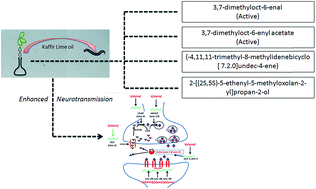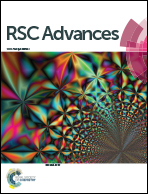Citrus hystrix-derived 3,7-dimethyloct-6-enal and 3,7-dimethyloct-6-enyl acetate ameliorate acetylcholine deficits
Abstract
Cholinergic neurotransmission is an affliction in a plethora of neurodegenerative disorders such as Alzheimer’s, Huntington’s and Parkinson’s diseases and some psychiatric disorders like schizophrenia. The current management of many of these diseases relies heavily on treatments designed to elevate neurotransmission either through curtailing Ache activity or positive modulation of Ach receptors. The present study elaborates for the first time the potential and underlying mechanism of Kaffir lime oil (KLO) and its active constituents, citronellal (3,7-dimethyloct-6-enal) and citronellyl acetate (3,7-dimethyloct-6-enyl acetate), extracted from Citrus hystrix as potential therapeutic agents in the augmentation of cholinergic response in Caenorhabditis elegans. We observed significant elevation of synaptic Ach levels evident through aldicarb assay, being orchestrated through mitigation of Ache activity upon treatment with KLO, recorded at genomic and biochemical levels, along with elevated genomic expression of choline transporter. The active components citronellal and citronellyl acetate were also found to lower Ache activity at biochemical and transcriptomic levels, besides also executing their function through modulation of choline transporter and choline acetyltransferase at genomic levels. Paradoxically, other constituents beta caryophellene and linalool were found to show adverse effects at lower doses. Notably, all of the components of KLO and KLO itself were devoid of any interaction-based Ache inhibitory activity as determined through in vitro assay. Our study has identified and validated KLO and active components for their significant pharmaco-medical importance, presenting novel leads and a new line of drug action compared to the conventional Ache inhibition-based therapeutic approach.


 Please wait while we load your content...
Please wait while we load your content...